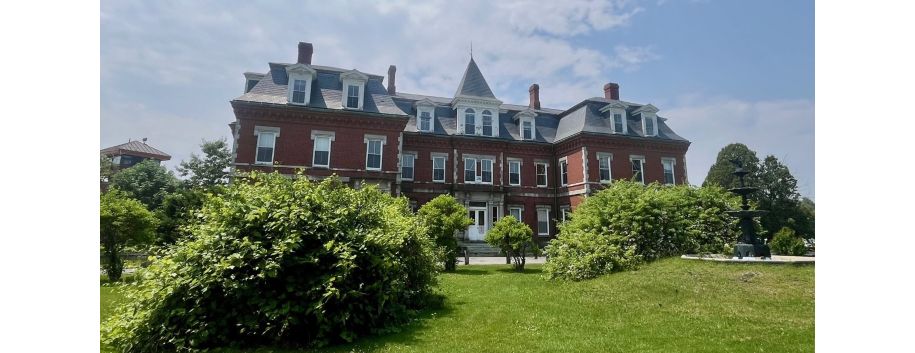Upzone Update: How the Permit Process Broke Homebuilding
By Amy Dain
June 18, 2025
In Massachusetts, we have created residential permitting reviews that even Indiana Jones could fail. The perils of zoning are just the entrance gate.
Next up is the multi-layered puzzle of public works, public health, conservation, electric, plumbing, stormwater, building, rodent control—codes upon codes, some state, some local, some that contradict themselves—interpreted and enforced by inspectors and boards in inconsistent ways.
The Problem: Permitting and Code Chaos
Codes shouldn’t be the hazards of a hero’s journey. They are too important for public health, safety, the environment, and our shared infrastructure. Codes should be decipherable, consistent, and boring.Developers of small-scale residential projects tend to work in only a few communities, because it takes time to know the local codes and code enforcers, and their typical interpretations of codes and expectations for builders. The learning curve is prohibitively steep. This undermines economies of scale that can bring lower prices.
A Developer’s View: Chris Lee’s Frustration
Chris Lee, of Backyard ADUs, is trying to scale up his business, to build small homes at modest prices in communities across Massachusetts. People need the homes, at scale.
He has hired four high-skill professionals for pre-construction project management, and they can barely keep up. Permitting has become a major part of his cost structure—for the staffing, the extensions to project timelines, and the added, unpredictable engineering that the permit reviews lead to.
In general, builders explain that the staffing, delays, and project changes add tens of thousands, sometimes more than $100,000, to the direct cost of building housing units.
Chris suggested to me that it would be helpful to “shine some light on the reality of how the same code is enforced in three different towns.” Every building-person, he said, knows that one inspector’s enforcement is completely different from the inspector’s three towns over. He wondered if we could get data on that. “I’ve never actually seen it attempted to be quantified,” he said.
Funny enough, I did! In 2004.
The full glory of the detail-rich analysis can be found in the reports Shades of Green and Residential Land Use Regulation in Eastern Massachusetts. How “the same code is enforced in three different towns” became a bit of an obsession. Anyway, most of the local codes were unique; it was incredible how many variations of definitions and measures could proliferate. But even when the local regulations were the same, they could be read differently.
Hyper Local Control in Action: The Vernal Pool Example
Many municipalities defined a vernal pool to include the 100-foot zone of dry land around the pool that serves as habitat for creatures dependent on the pool, such as salamanders. Most of the regulations also specified that developments within 100 feet of vernal pools would be subject to review.
Warning, this is getting in the weeds: Twenty-nine of the municipal requirements could be interpreted as making 200 feet from the waterline subject to review—100 feet of “habitat" in the definition of vernal pool plus 100 feet of “buffer zone” around the vernal pool. A researcher contacted the 29 municipalities to clarify whether they were enforcing 100 or 200 feet total. About half went with 100, and half with 200—based on the same language.
In one case, when a researcher asked an assistant administrator of a conservation commission whether the commission claims jurisdiction, in general, of buffer zones around vernal pools, he responded, “It is not clear; we go back and forth; probably not.”
For even greater confusion, look at local definitions of land subject to flooding and isolated wetlands. Some are precise; others are vague. But most are unique, in a way that feels both arbitrary and dizzying.

Edmands Park in Newton
Where This Leads Us
I usually shy away from criticizing wetlands regulations. They have an important purpose I endorse. Concern for the environment got me involved in land use policy. I think we should dramatically liberalize zoning, while zealously protecting wetlands and water. Go big on the uplands.But, it does not make sense for 351 cities and towns in Massachusetts to have so many unique regulations—and unique interpretations of regulations—for land use and building. Add to the confusion that the regs are frequently revised. It’s a mess. It makes homes unnecessarily expensive and scarce. We are dragging down the viability of firms that should be building us the homes we need, at scale.
To start with, the Commonwealth could strengthen the state laws that pertain to wetlands and septic systems—and remove local authority to augment these state protections. The Commonwealth could also consider regionalizing enforcement of conservation, public health, and other areas of building inspections. (Franklin County has already regionalized some inspections.)
The multi-faceted challenges in this realm will require diverse reforms, not a singular fix. Many people have been studying the problems and offering proposals. As always, there’s work ahead.
In Other News...

MCI-Concord was a correctional facility until it closed last year. The property was included in the list of state-owned underutilized properties identified by the Healey Administration as having potential for residential development. The state is collaborating with the Town of Concord to plan for redevelopment.
Last night Milton's Town Meeting approved rezoning to comply with MBTA Communities. At the same time, Winthrop again voted down it's compliance proposal. Now 139 municipalities have adopted zoning to comply.
The Healey Administration has reviewed the property inventory of its Division of Capital Asset Management and Maintenance (DCAMM), and identified 450 acres of underutilized land, across many sites, where an estimated 3,500 new housing units could be built.
A Superior Court judge dismissed a lawsuit brought by nine municipalities about the MBTA Communities law, also known as 3A. The judge ruled that zoning reform law is not an unfunded mandate, and therefore will remain in effect. The lawsuit was filed by Duxbury, Hamilton, Hanson, Holden, Marshfield, Middleton, Wenham, Weston, and Wrentham.
Reporter Grace Ferguson of the New Bedford Light brings us the story of the accidental elimination of single-family-only zoning in New Bedford.
The Town of Acton adopted new zoning for Open Space Residential Development, to protect more open space and promote development of smaller homes. The new zoning allows for multifamily housing as-of-right, at a density of up to seven units per acre in all residential zones, as long as 60% of the property is restricted as open space and other requirements are met. By special permit, up to 15 units per acre are allowed, with an 80% open space set-aside.
The Joint Center for Housing Studies (JCHS) held a half-day forum about social housing. Social housing initiatives expand the public sector’s direct role in financing, developing, and managing residential projects that are socioeconomically inclusive.
Check out Jonathan Berk’s newsletter re:Main re:Think about policy reforms for “plentiful housing options in thriving, dynamic communities.”
